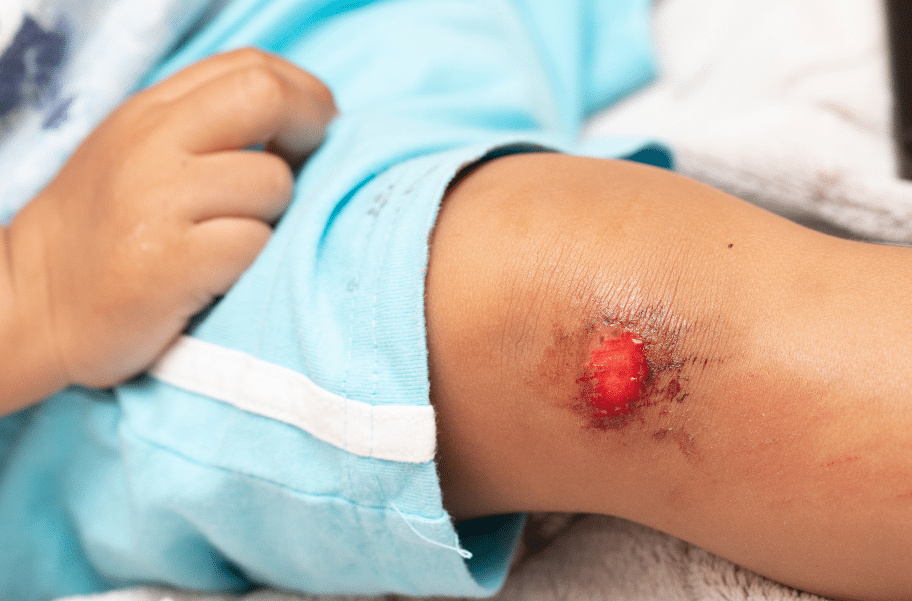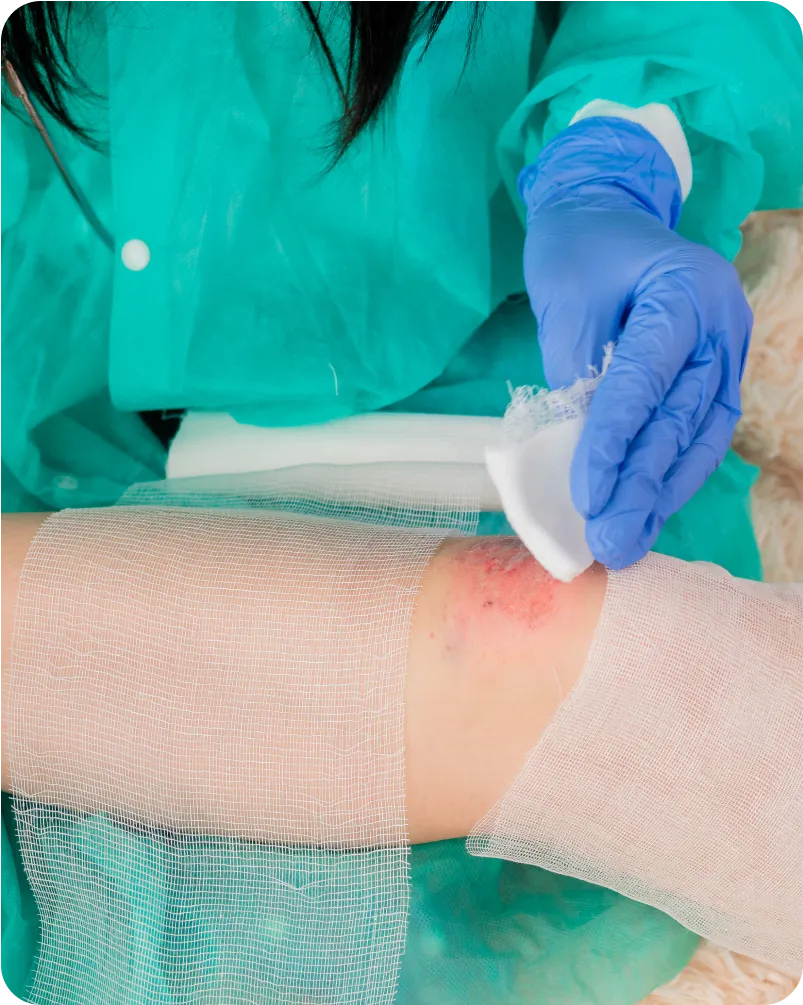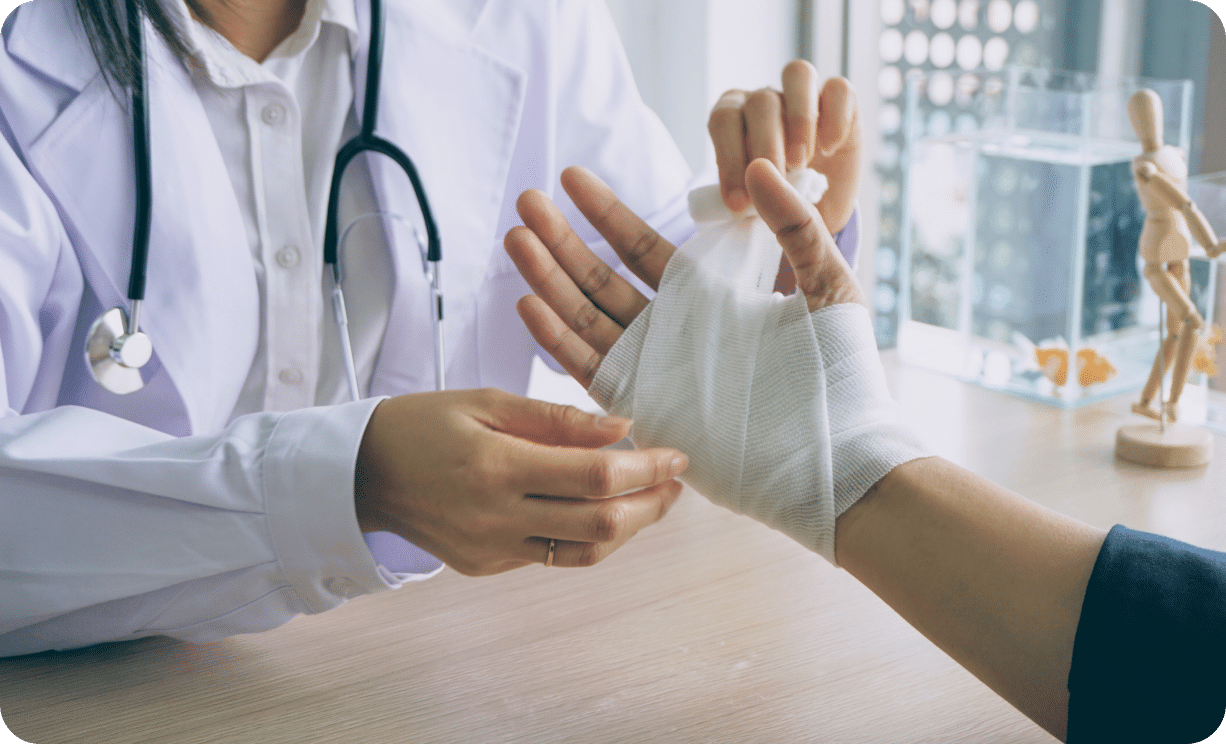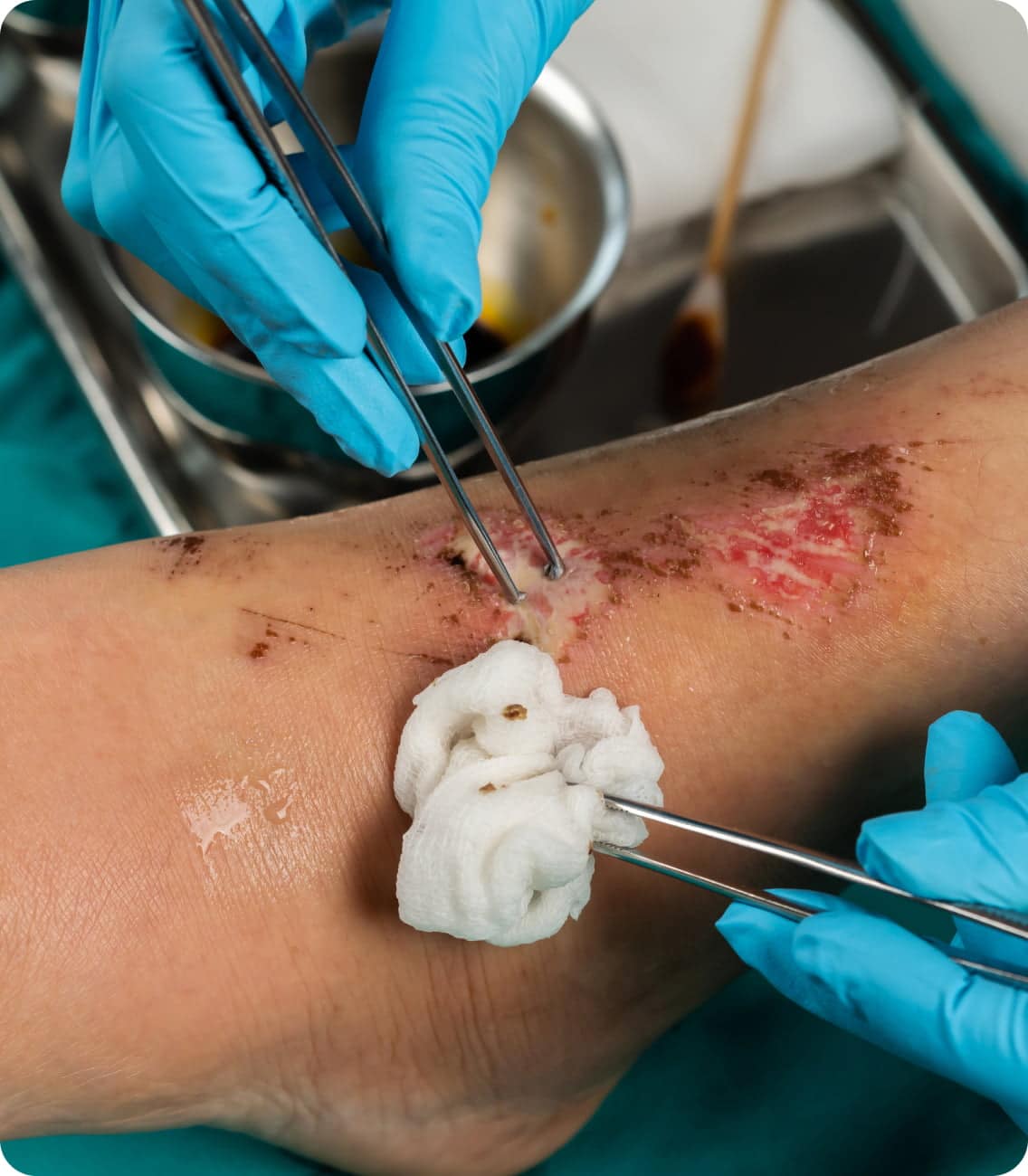
Avulsion Wounds
Understanding Avulsions and Their Treatment
What are Avulsion Wounds?
Avulsion wounds refer to injuries where a significant portion of skin or tissue is torn away from the body. These wounds can be caused by accidents, such as severe falls or machinery-related injuries. Avulsion wounds often result in heavy bleeding and require immediate medical attention to control bleeding, clean the wound, and facilitate proper healing.
Treatment of Avulsion Wounds
Avulsion wounds occur when tissue is forcibly torn away from the body, resulting in a traumatic injury that can involve skin, muscles, tendons, or even bones. Treatment of avulsion wounds aims to control bleeding, prevent infection, promote healing, and restore function.
Control Bleeding:
- Apply direct pressure - Use a clean cloth or sterile gauze to apply firm pressure directly to the wound to control bleeding.
- Elevate the affected area - Elevating the injured limb or body part above the level of the heart can help reduce blood flow to the wound and minimize bleeding.
Clean the Wound:
- Rinse the wound - Use clean water or a saline solution to gently rinse the wound and remove any dirt, debris, or foreign objects.
- Avoid scrubbing - Do not scrub the wound, as this can further damage tissue and increase the risk of infection
Assess for Tissue Loss:
- Examine the wound carefully to determine the extent of tissue loss and assess the presence of any remaining tissue or structures.
- In cases of extensive avulsion injuries with significant tissue loss, prompt medical attention is necessary for evaluation and possible surgical intervention.
Preserve Tissue:
- If possible, attempt to preserve any avulsed tissue by placing it in a clean, moistened cloth or plastic bag. Avoid handling the tissue directly to minimize contamination. Keep the avulsed tissue cool, but do not freeze it, as extreme temperatures can damage the tissue and reduce the chances of successful reattachment.
Prevent Infection:
- Apply an appropriate dressing to the wound to protect it from contamination and promote healing.
- Monitor the wound for signs of infection: Pay attention to symptoms such as increased pain, redness, swelling, warmth, or drainage of pus, and seek medical attention if infection is suspected.

When to Seek Medical Attention?

Avulsion wounds often require medical evaluation and treatment, especially if they involve significant tissue loss, damage to underlying structures, or signs of infection. Seeking prompt medical attention is crucial for avulsion wounds, especially in cases of severe or extensive injuries.
- Extensive Tissue Loss: If the avulsion results in significant tissue loss or damage, especially if it involves large areas of skin, muscles, tendons, or other structures, immediate medical evaluation is necessary.
- Deep or Penetrating Injuries: Avulsion wounds that penetrate deep into the tissue or involve underlying structures such as tendons, ligaments, nerves, or bones require medical assessment and possible surgical intervention.
- Uncontrolled Bleeding: If the avulsion wound is bleeding profusely and cannot be controlled with direct pressure, or if bleeding continues despite attempts to control it, seek immediate medical attention.
- Exposed Bone or Joint: Avulsion wounds that expose bones or joints are considered serious injuries and require urgent medical evaluation to prevent complications such as infection or damage to underlying structures.
- Signs of Infection: If the avulsion wound shows signs of infection, such as increased redness, warmth, swelling, or drainage of pus, seek medical attention promptly. Signs of systemic infection, such as fever or chills, should also be evaluated by a healthcare provider.
- Inability to Clean the Wound: If the avulsion wound is contaminated with dirt, debris, or foreign objects that cannot be easily removed, or if there are concerns about proper wound cleaning, seek medical assistance for thorough wound evaluation and cleaning.
- Pain and Discomfort: Severe pain, especially if it persists or worsens over time, may indicate underlying tissue damage or complications and should prompt medical evaluation.
- Inability to Move or Use the Affected Area: If the avulsion injury affects mobility or function, such as difficulty moving a limb or performing daily activities, seek medical attention to assess for underlying injuries or complications.
- Delayed Healing: If the avulsion wound does not show signs of healing or if there are concerns about delayed wound closure, seek medical evaluation for further assessment and management.
- Concerns about Tetanus: If the avulsion wound was caused by a puncture or contaminated object and the patient's tetanus vaccination status is not up to date, medical attention is necessary to assess the need for tetanus prophylaxis.
Avulsion wounds that are severe, deep, contaminated, or show signs of infection require prompt medical attention to prevent complications and optimize outcomes. Early intervention is essential for proper wound assessment, cleaning, and management to promote healing and reduce the risk of complications.
Learn MoreOur Approach
To Avulsion Care
At MetaCure we prioritize the well-being and comfort of our patients. Our experienced team of healthcare professionals is dedicated to providing prompt, comprehensive, and compassionate care for lacerations of all types and severities.

Our Avulsion Treatments
